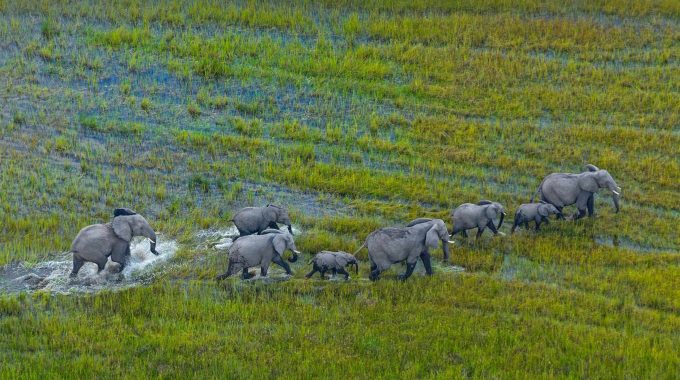Who lives in the Okavango Delta? The Okavango Delta is not only home to a vast array of…
What are the best months to visit Okavango Delta?
What are the best months to visit Okavango Delta? The best months to visit the Okavango Delta largely depend on what kind of experience you’re seeking, as the ecosystem changes dramatically with the seasons. Here’s a breakdown of what to expect during different months of the year:

-
Dry Season (May to October) – Best for Wildlife Viewing
The dry season is generally considered the best time to visit the Okavango Delta, particularly for wildlife viewing. During this time, the vegetation is less dense, and animals are more concentrated around the remaining water sources, making it easier to spot wildlife.
-
- Best months: June, July, August, September, and October
Why this period is ideal:
-
- Wildlife Concentration: The Okavango Delta is at its fullest during the dry season. The seasonal flooding (usually peaking in June-July) transforms the area into a lush wetland, which draws animals to the delta for water and food. This is the best time to see large herds of elephants, buffalo, and antelope.
- Game Viewing: The water levels allow for a variety of safari activities like boat trips and mokoro rides (traditional dugout canoes), in addition to game drives. The combination of both water and land-based safaris gives you a full range of experiences.
- Clearer Visibility: The dry season results in thinner vegetation and more open landscapes, making it easier to spot predators like lions, leopards, and wild dogs.
- Mild Temperatures: Temperatures are more moderate than during the summer months, making for a more comfortable experience. It can be chilly in the early mornings and evenings, especially in June-July, so pack accordingly.
-
Wet Season (November to April) – Best for Birdwatching & Scenic Beauty
The wet season brings dramatic changes to the Okavango Delta, and while it’s not the peak season for wildlife, it offers a completely different experience, especially for those interested in birdwatching and experiencing the delta in its lush, vibrant form.
-
- Best months: November, December, January, February, and March
Why this period is special:
-
- Birdwatching: The wet season is a paradise for birdwatchers, as migratory birds arrive in large numbers. Species like the Wattled Crane, Secretary bird, and many varieties of raptors, waterfowl, and waders are abundant. The delta is especially beautiful during this time, with lush, green vegetation and wildflowers blooming.
- Calving Season: Many herbivores, such as antelope and wildebeest, give birth during the wet season (typically November to February), which brings a surge of young animals and attracts predators, such as lions and hyenas, making for exciting wildlife sightings.
- Fewer Tourists: The wet season is considered the low season in terms of tourism, which means fewer crowds, more peaceful game drives, and a more exclusive experience at camps and lodges. If you’re looking for a quieter and more intimate safari experience, this might be the time to visit.
- Lush Landscape: The Okavango Delta is at its most picturesque during the wet season, with vibrant, green vegetation and dramatic skies, particularly after a rainstorm. The flooded channels can make for beautiful photography, especially in the early mornings or evenings when the light is soft.
Drawbacks of the Wet Season:
-
- Access Limitations: The heavy rains can make some areas of the delta inaccessible, especially during January and February, when flooding is at its peak. This can limit movement within the region and make some lodges less accessible. Some camps, especially in more remote areas, may close or have limited access during this time.
- Hot and Humid: Temperatures can be hot and humid, especially in the peak months of December to February. Afternoon rains can bring a break in the heat but also increase humidity levels.
Summary of the Best Times to Visit:
-
- Best for Wildlife Viewing (Big 5 and predators): June to October (dry season) – This is the peak season for safaris and the best time to see large numbers of animals.
- Best for Birdwatching and Scenic Beauty: November to March (wet season) – This is when the delta is at its lushest, and you can enjoy the beauty of the flooding, as well as abundant birdlife and calving herds.
Ideal Months for Most Travelers:
-
- June, July, August, and September – These months offer the best overall experience, with optimal wildlife viewing and comfortable weather conditions. They are also the most popular months for safaris, so you’ll have the best chances to see a variety of animals, including the Big 5.
If you’re interested in a particular type of Botswana safari experience (birdwatching, photography, or big game sightings), adjusting your travel dates based on your interests can greatly enhance your visit to this incredible ecosystem.



